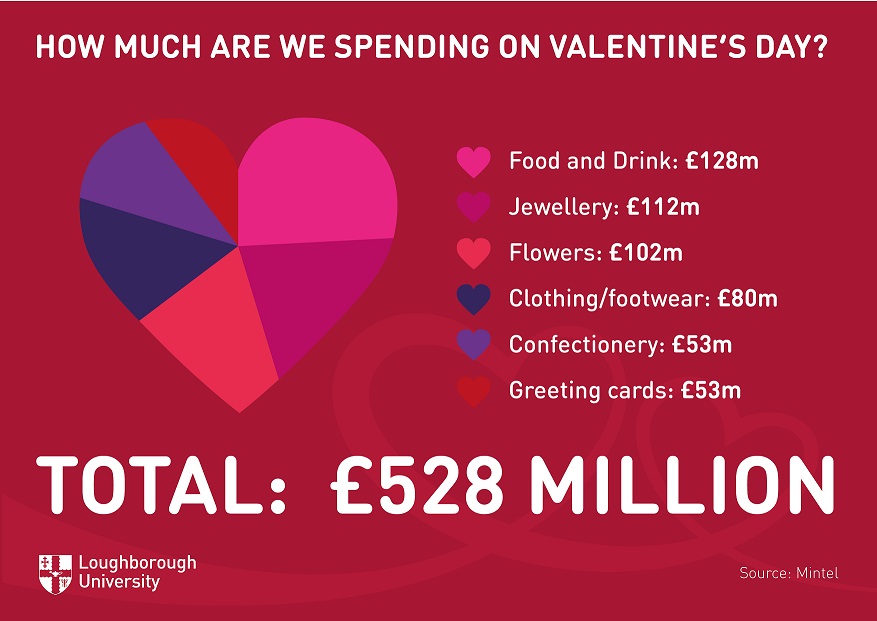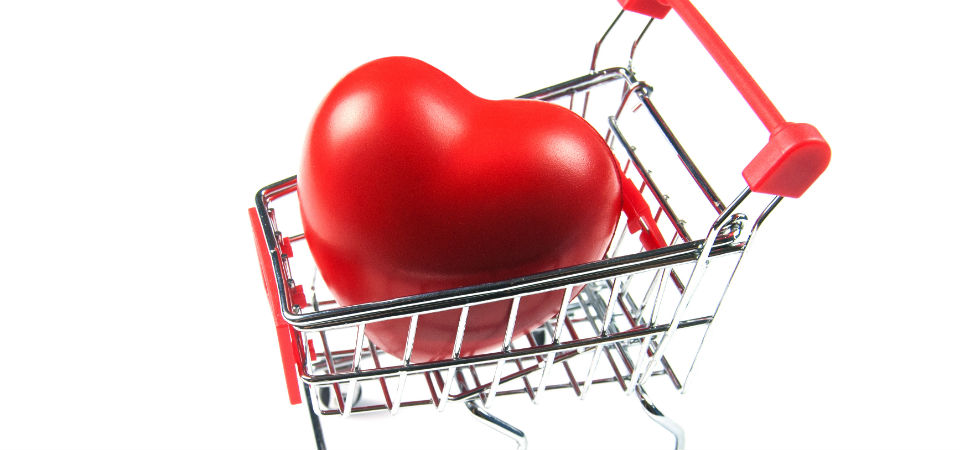Loughborough University economist Dr Jon Seaton, a Reader in Business Economics, has looked at the £650 million UK money-spinner (of which £528 million is spent on traditional gifts, cards and romantic meals), which sees couples’ affections and courtships flourish on February 14, each year.
With one day to go, he has put together some helpful information for celebrating sweethearts looking for love-on-a-budget.
Understanding why people feel the need to spend big is key, said Dr Seaton.
He said: “Economics is the study of people making a living, part of that study involves the economics of the household and that involves the search for a mate and the games couples play over household resources which may depend on their earnings, age, experience, signalling, power play and outside threats.

"A paper entitled, Bargaining versus non-cooperation; transaction costs within marriage, from my doctoral thesis, showed that the earning power and the cost of partner-time can force a marriage from sharing to non-cooperation, because of the extra cost of negotiation and monitoring it creates.
“As most partnerships and marriages occur for people in their early thirties it is no surprise that ages 28 to 37 will be the biggest spenders – an average of 81% - and that’s reflected in the one day of the year where lavishing gifts upon your loved one is expected.
“Men and women are, after all, feverishly contemplating, engaging in, and hopefully completing the search for a partner – known as the ‘marriage market’.
“Recent studies into Valentine’s Day behaviour indicate gift-giving as a crucial signal of a healthy, strong match to warn off potential rivals and plays a significant role in the psychology behind how much people spend.”
It is men who spend more compared women – although the difference is lessening.
Last year, 53% of men spent an average of £72, whilst 39% of women spent £44 on average.
The average for both sexes combined is £60.
Avoiding supermarket tactics – beware the panic gift

Britain’s supermarkets are tactically trying to get as much of that as possible, with retailers giving competitive offers on Valentine’s Day essentials, but raising prices elsewhere in the store to balance out the loss.
“The modern-day marketing ploy is much more focused on celebrating relationships by staying at home with romantic meals for two,” said Dr Seaton.
“This is a necessary change, purposely marketed and promoted, to increase footfall in their large format stores.
“Common to all major retailers this year are deals on chocolates, meals for two, some as low as £10, flowers, which includes £5 for a dozen roses and cards costing from 49p to about £4.
“These items all come in very cheap indeed because these are the commodities they choose to compete with.
“However, other prices of ‘normal’ products may rise in these periods as we, the consumer, give less attention to them and focus on the search for the ‘panic gift’ for a loved one.”
A guide to buying Valentine’s chocolates

Dr Seaton said: “Let us consider one common gift which is not potentially offensive, not necessarily expensive and can be picked up readily from any retailer… chocolates!
“Over recent years many items including chocolate have increased in price, overtly or by shrinking package size, known as shrinkflation.
“The good news is that retailers are still concerned that consumers are limiting their expenditure, so you can actually pick up small boxes of chocolates for £1 in most retailers – brands such as Matchmakers (130g), Guylian Belgian Chocolate Seahorses (42g) as well as Lindt Lindor Milk Chocolate Truffles (50g).
“At the opposite end of the spectrum – as of Sunday, February 11, the most expensive boxed chocolates in the big four retailers were from Sainsbury’s - Godiva Collection Anniversaire 18 Assorted 220g for £23.
“The others, Tesco, ASDA and Morrisons three top prices were about half that value. So, you are well advised to check before committing to a store for expensive chocolates as they may not stock them, in many cases stores are already out of stock.
“So how much should you spend?
“Well that's quite easy – the most common price for a box of chocolates is £4, at least for Sainsbury’s.
“What does this tell us about chocolate, gifts and that elusive partner?
“Well, economics always has an answer, this is to do with the ‘marriage market’, or the jobs market – indeed, any market.
“It’s to do with the costs and benefits of search.
“For example, if you are looking for a reasonably priced box of chocolates by visiting retailers or computer searches – the time and frustration cost increases minute by minute.
“But as this time progresses the net gains from finding better and better chocolates diminish.
“The optimal time to stop searching is where these net costs and benefits coincide.
“It seems that for expensive chocolates – it is worth searching for the benefit of cheaper chocolates, but for wealthier people the time cost is high.
“Hence Thornton’s chocolates have such variable prices.
“For cheaper products, this is not the case – which is why they tend to be priced very similarly.
“But, put the right amount of time and effort into your search and your dream will come true, this is true for chocoholics and for romantics – happy Valentine’s Day!”
ENDS

